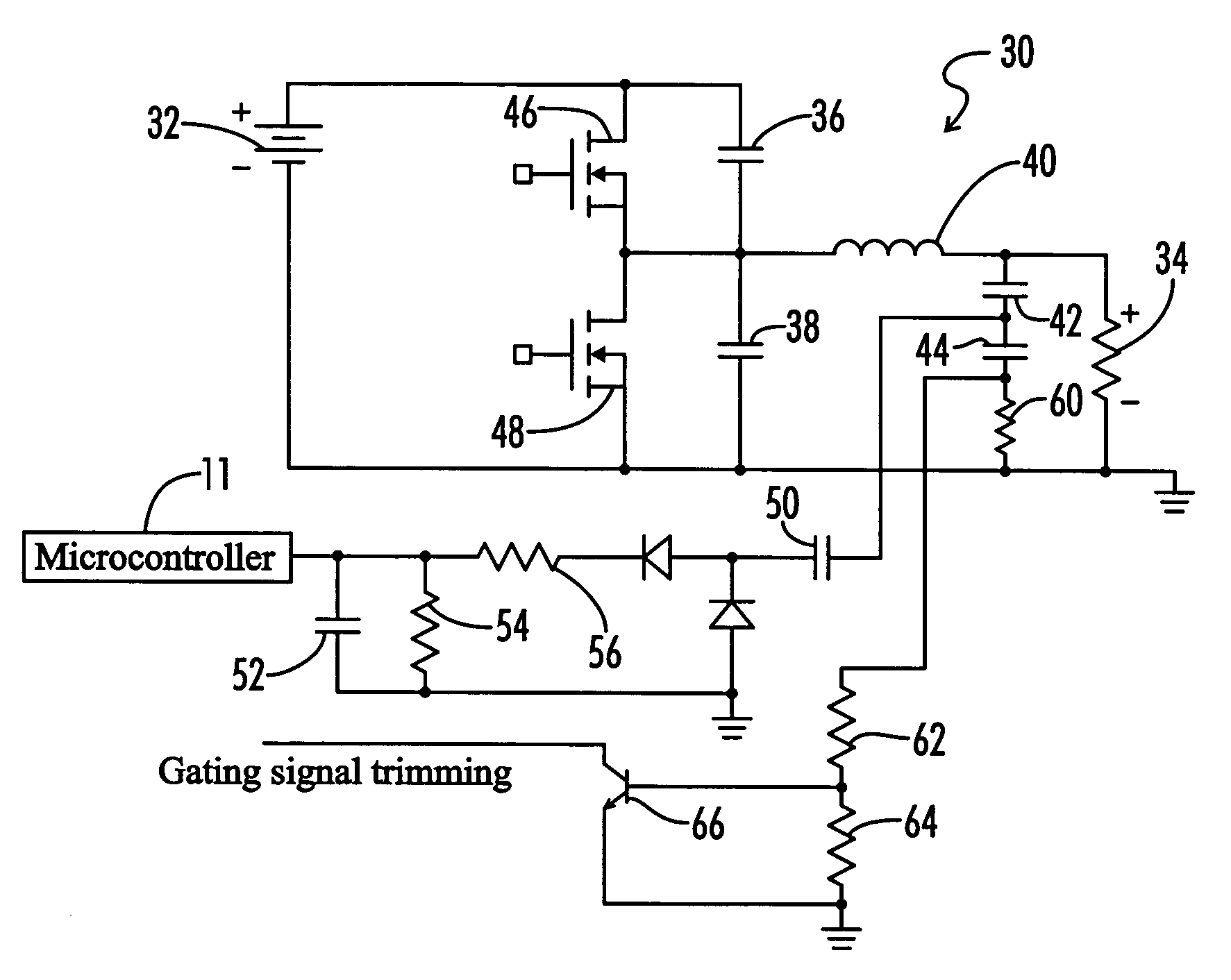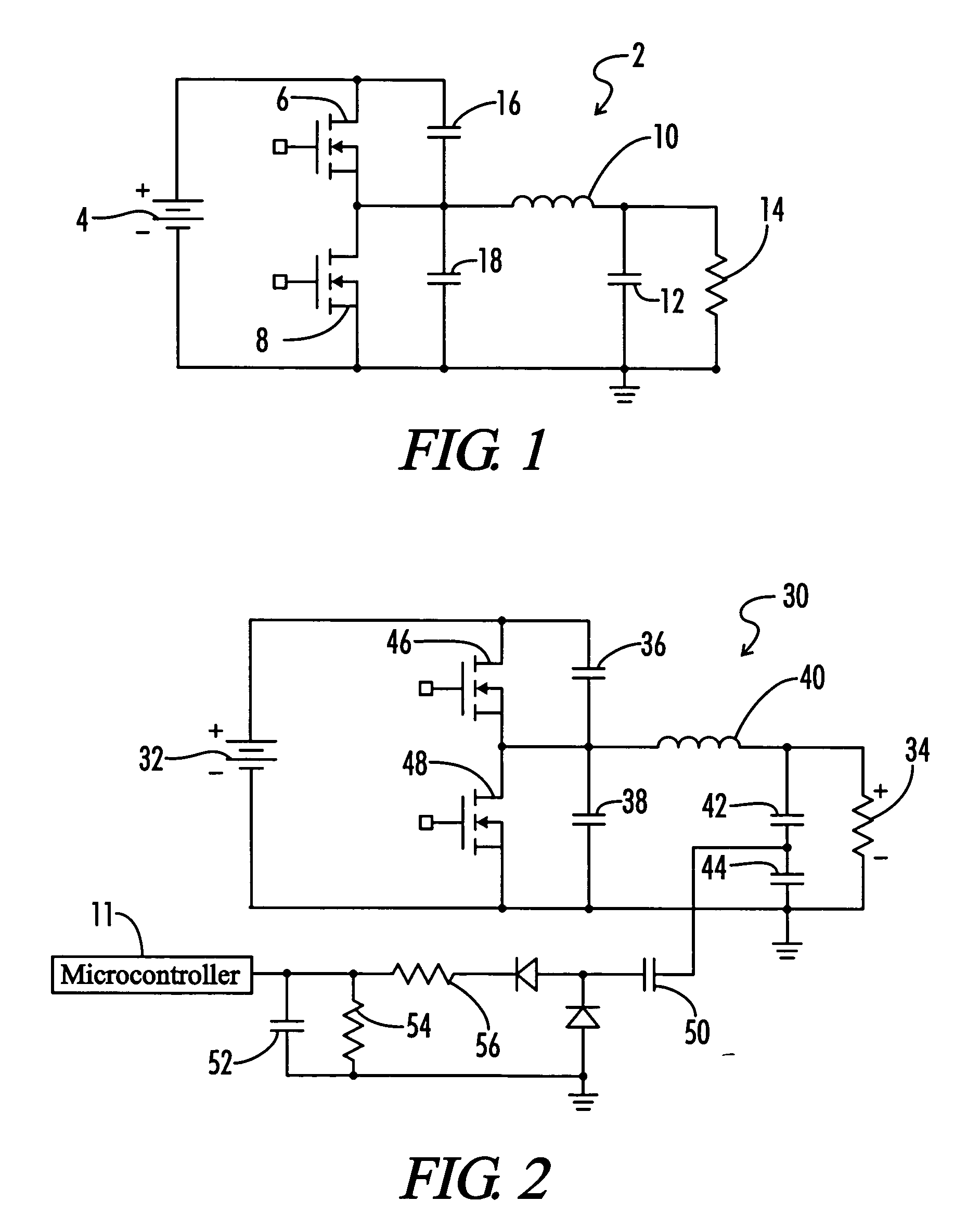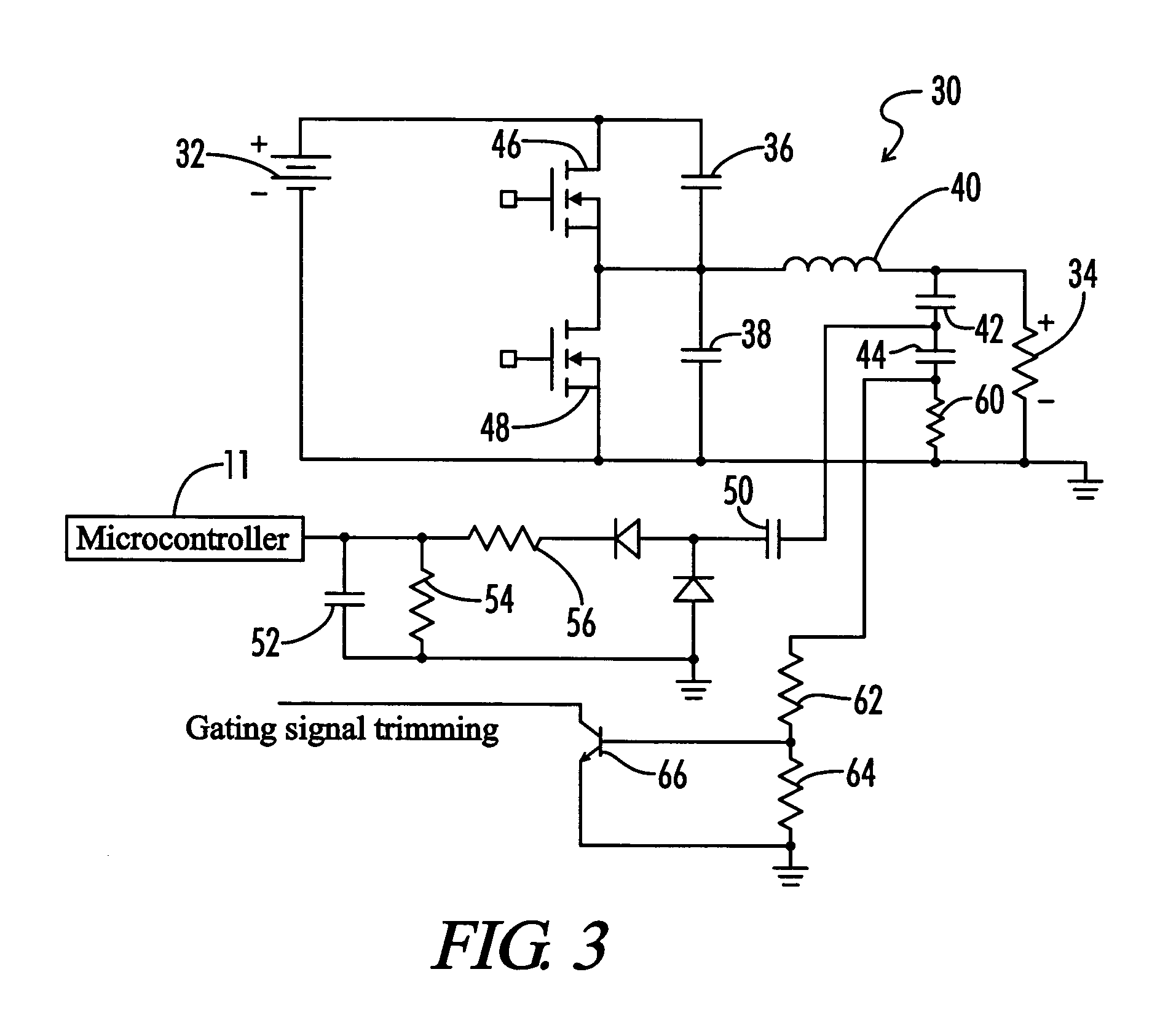Electronic ballast with lossless snubber capacitor circuit
a capacitor circuit and electronic ballast technology, applied in the direction of electric variable regulation, process and machine control, instruments, etc., can solve the problems of damage to the capacitive mode switching, the open circuit voltage of the instant-start ballast needs to be controlled, and the high circulating current, so as to reduce the loss of turn off and limit the variation of output voltage
- Summary
- Abstract
- Description
- Claims
- Application Information
AI Technical Summary
Benefits of technology
Problems solved by technology
Method used
Image
Examples
Embodiment Construction
[0014]A preferred embodiment of the present invention is directed toward an instant start electronic ballast for a gas discharge lamp having a substantially lossless snubber circuit for reducing the turn off loses of the transistors in the inverter of the ballast. For voltage-fed, series-resonant, half-bridge inverters, the turning-on of the FETS or transistors involves zero voltage switching, but the turning-off of the FETS and transistors involves hard switching. For most ballasts, the turning-off current is small so that losses associated with the turning-off are not significant. However, for an Instant Start—High Range Voltage ballast, the current at turn-off is near its peak and, thus, the turn-off losses are relatively high. Furthermore, due to the larger die size of the high voltage FETS, more gate charge has to be removed from the gates before they can be turned-off. This increased gate charge increases the turn-off losses for a high voltage inverter.
[0015]A simplified schem...
PUM
 Login to View More
Login to View More Abstract
Description
Claims
Application Information
 Login to View More
Login to View More - R&D
- Intellectual Property
- Life Sciences
- Materials
- Tech Scout
- Unparalleled Data Quality
- Higher Quality Content
- 60% Fewer Hallucinations
Browse by: Latest US Patents, China's latest patents, Technical Efficacy Thesaurus, Application Domain, Technology Topic, Popular Technical Reports.
© 2025 PatSnap. All rights reserved.Legal|Privacy policy|Modern Slavery Act Transparency Statement|Sitemap|About US| Contact US: help@patsnap.com



